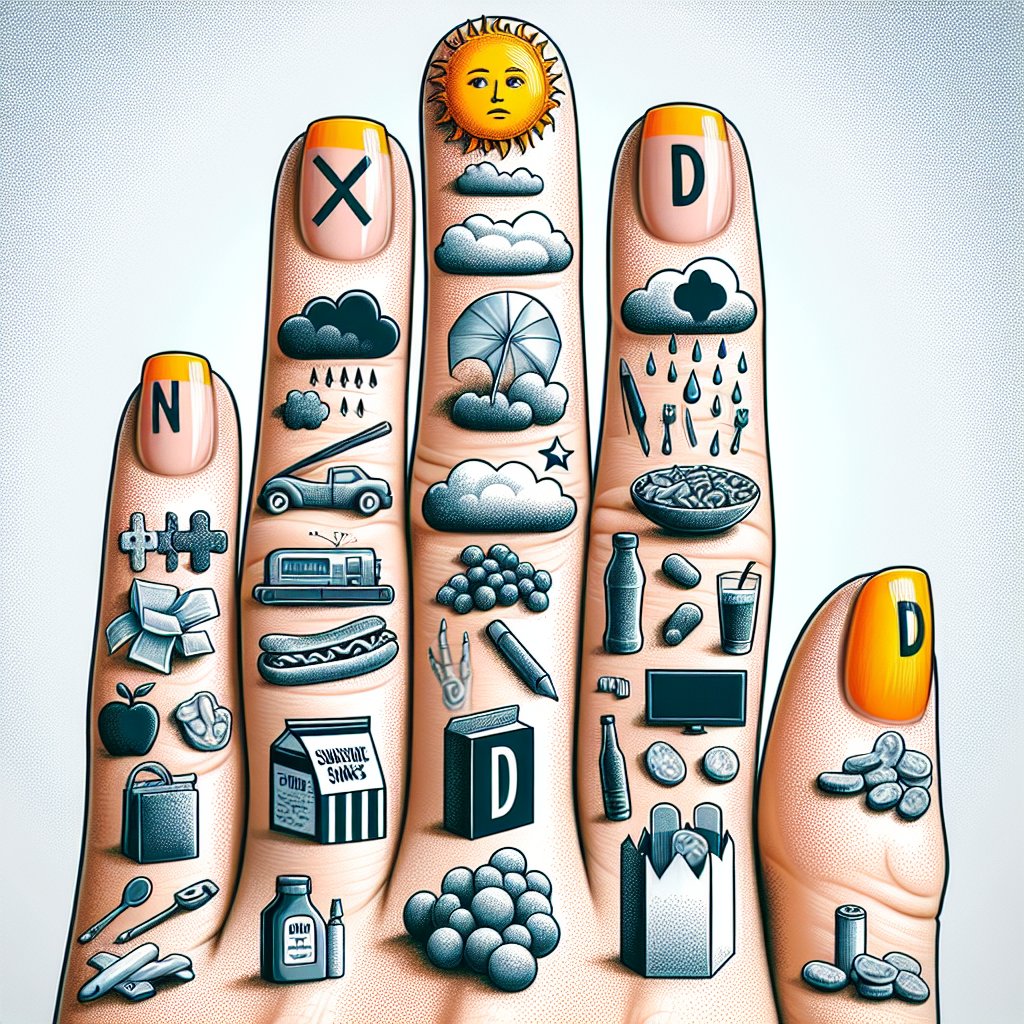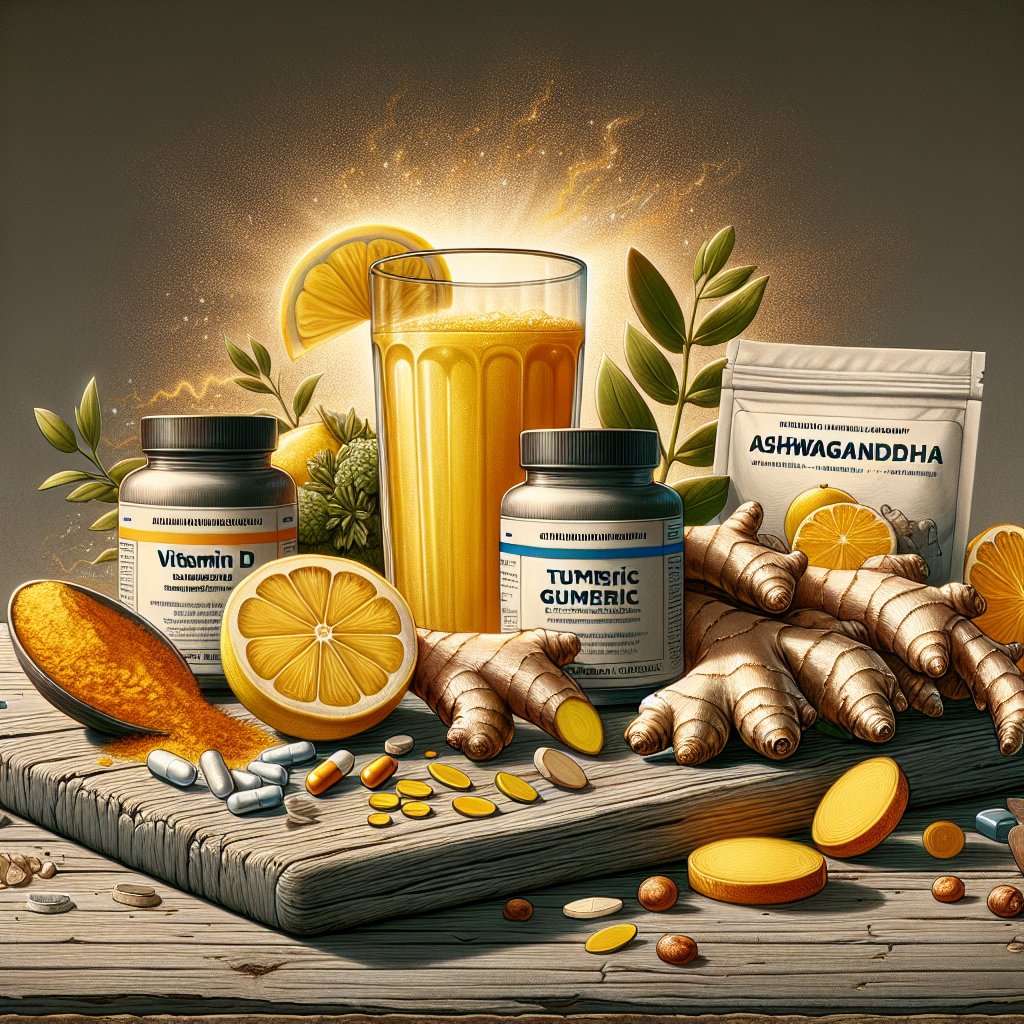Warning Signs of Fingernail Vitamin D Deficiency: How Neglecting This Crucial Nutrient Can Harm Your Nails and Health!
Warning Signs of Fingernail Vitamin D Deficiency: How Neglecting This Crucial Nutrient Can Harm Your Nails and Health!
Hey there, keto queens! 💁♀️ Today, we’re diving into a topic that’s so essential for our overall health, yet often overlooked—vitamin D. We all know it as the “sunshine vitamin,” and it’s super important for our bodies, especially when it comes to our nails. So, let’s chat about vitamin D and how neglecting this crucial nutrient can impact the health of our nails and our entire well-being.
Importance of Vitamin D for Overall Health
Okay, let’s start with a little vitamin D 101. You’ve probably heard how important this vitamin is for our overall health, right? Well, it’s not just a myth! Vitamin D plays a key role in maintaining strong and healthy bones by helping with the absorption of calcium. But that’s not all—studies have shown that it also supports our immune system, heart health, and even our mood. Impressive, right?
How It Relates to Fingernail Health
Now, here’s where it gets interesting for us, keto babes. Research has linked vitamin D deficiency to various nail problems, including brittle nails, dry cuticles, and slow nail growth. You see, vitamin D helps in the formation of new nails and the maintenance of strong, healthy nail beds. When we’re lacking in this essential nutrient, it can definitely take a toll on the appearance and strength of our nails. Not to mention, healthy nails are a sign of overall well-being, so they kind of go hand-in-hand, don’t you think?
But wait, there’s more! Recent studies have revealed that vitamin D receptors are present in the cells responsible for nail growth. This means that vitamin D directly impacts the health and growth of our nails. So, it’s safe to say that getting enough of this crucial nutrient is a non-negotiable for fabulous, Instagram-worthy nails!
So, are you ready to navigate the warning signs of fingernail vitamin D deficiency with me? Let’s uncover how neglecting this essential nutrient can harm our nails and overall health—and of course, learn how to keep our nails as fierce as our keto game! Stick around for some practical advice that will help you nourish your body and your nails with the right amount of vitamin D. You got this, gorgeous! 💅

Signs of Fingernail Vitamin D Deficiency
If you’re wondering whether you might be lacking in vitamin D, your fingernails can actually provide some helpful indicators. Not getting enough vitamin D can manifest in various symptoms and affect your overall health. Here are some specific signs in your fingernails that could indicate a lack of this crucial nutrient:
1. Brittle Nails
One of the key signs of vitamin D deficiency is having brittle nails. Research has shown that insufficient levels of vitamin D can lead to brittle and fragile nails, making them prone to chipping and breaking easily. If you notice your nails becoming more brittle, it might be a good idea to consider your vitamin D intake.
2. Ridged or Spoon-shaped Nails
Another observable sign of fingernail vitamin D deficiency is the development of ridges or spoon-shaped nails. These abnormalities in nail texture can be an indication of underlying nutrient deficiencies, including vitamin D.
3. Slow Nail Growth
Vitamin D plays a role in promoting the growth and strength of nails. If you find that your nails are growing slower than usual or seem to be stunted in their growth, it could be a potential warning sign of insufficient vitamin D levels in your body.
4. White Spots on Nails
White spots or bands on the nails, also known as leukonychia, can be associated with various nutritional deficiencies, including vitamin D deficiency. Pay attention to these white spots as they can suggest an imbalance in essential nutrients in your body.
It’s important to note that while these indicators can point to potential vitamin D deficiency, they are not conclusive evidence on their own. Consulting with a healthcare professional and getting a blood test to check your vitamin D levels is crucial for an accurate assessment.
Understanding the signs of fingernail vitamin D deficiency is an essential step in taking charge of your health. If you’re experiencing these symptoms, it’s worth considering whether your vitamin D levels might be affecting the health of your nails and overall well-being.
Causes of Fingernail Vitamin D Deficiency
When it comes to the health of our fingernails, vitamin D plays a crucial role in ensuring their strength and overall well-being. A deficiency in vitamin D can manifest itself in various ways, and one of the key warning signs is the impact it can have on our fingernails.
There are several reasons why a deficiency in vitamin D can specifically affect the health of our fingernails:
Insufficient Sun Exposure
Vitamin D is often referred to as the “sunshine vitamin” for a good reason. Our bodies naturally produce vitamin D when our skin is exposed to sunlight. However, many people, especially those living in northern latitudes or working long hours indoors, may not get enough sunlight to produce adequate vitamin D, leading to a potential deficiency.
Dietary Factors
Inadequate dietary intake of vitamin D can also contribute to deficiencies. Foods rich in vitamin D include fatty fish, egg yolks, and fortified dairy products. However, those following a strict vegan diet may struggle to obtain enough vitamin D from food sources alone.
Medical Conditions
Certain medical conditions can interfere with the body’s absorption and utilization of vitamin D, leading to deficiencies. Conditions such as celiac disease, Crohn’s disease, and liver or kidney disorders can impact the body’s ability to metabolize vitamin D effectively.
Understanding these causes can help individuals recognize and address potential deficiencies in vitamin D, thus safeguarding the health of their fingernails and overall well-being.

Effects of Fingernail Vitamin D Deficiency
Let’s talk about the sunshine vitamin – vitamin D, and its role in fingernail health and overall well-being. According to a study published in the Journal of Clinical Medicine, low levels of vitamin D have been linked to various nail problems such as brittle nails, slow nail growth, and ridges on the nails.
Our bodies produce vitamin D when our skin is exposed to sunlight, and it is also obtained from some foods and supplements. However, with our modern indoor lifestyles and concerns about sun exposure, many of us may not be getting enough of this crucial nutrient.
In fact, a study in the Journal of Cosmetic Dermatology found that nearly 80% of the participants with brittle nails were deficient in vitamin D. This deficiency not only impacts the health of our fingernails but also affects our overall well-being.
Adequate levels of vitamin D are essential for the absorption of calcium and phosphorus, which are vital for maintaining strong and healthy nails. Without enough vitamin D, our nails may become brittle, dry, and prone to breakage. Additionally, low vitamin D levels have been associated with low mood and energy levels, which can further impact our overall quality of life.
So, what can you do to protect your fingernail vitamin D levels and overall health? First off, spend some time in the sun – safely, of course, and ensure that you’re getting vitamin D through your diet. Fatty fish, cheese, and egg yolks are good dietary sources of vitamin D. If you suspect a deficiency, consulting with a healthcare professional and considering supplementation can be a proactive step towards maintaining optimal levels for healthy nails and a healthier you.
Prevention and Treatment
Now that we understand the important role of vitamin D in nail health, let’s explore some strategies to prevent and address fingernail vitamin D deficiency through diet, supplements, and lifestyle changes.
Dietary Sources of Vitamin D
One of the most effective ways to combat vitamin D deficiency is through a well-balanced diet. Foods that are rich in vitamin D include fatty fish such as salmon, mackerel, and tuna, as well as egg yolks, cheese, and beef liver. Additionally, fortified foods like milk, orange juice, and cereals can also contribute to your daily vitamin D intake.
By incorporating these vitamin D-rich foods into your meals, you can support the health of your fingernails and overall well-being.
Vitamin D Supplements
In cases where dietary sources alone may not provide sufficient vitamin D, supplements can be a beneficial addition to your daily routine. Consult with a healthcare professional to determine the right dosage for your individual needs. Regular intake of vitamin D supplements can help address any deficiency and promote healthy nails.
Lifestyle Changes
Spending time outdoors can also help boost your vitamin D levels. Sunlight is a natural source of vitamin D, and just a few minutes of sun exposure each day can make a significant difference. However, it is important to practice sun safety and avoid excessive exposure to harmful UV rays.
Incorporating outdoor activities like walking, jogging, or gardening into your routine can not only support your vitamin D levels but also contribute to overall wellness.
Remember, building and maintaining healthy nails goes hand in hand with caring for your overall health. By being mindful of your vitamin D intake, whether through diet, supplements, or lifestyle adjustments, you can keep your fingernails strong and beautiful while nurturing your body from the inside out.

Importance of Seeking Medical Advice
When it comes to addressing any health concerns, including potential vitamin D deficiency that could be affecting your nails, it’s crucial to emphasize the importance of seeking medical advice from healthcare professionals. While we can glean a lot of information from reliable sources and even self-diagnose to an extent, consulting with a healthcare professional is still essential for accurate diagnosis and personalized recommendations.
For instance, the symptoms of fingernail vitamin D deficiency can sometimes overlap with other health issues or nutrient deficiencies. It’s vital to have a healthcare professional evaluate your symptoms and conduct the necessary tests to pinpoint the root cause of any problems you may be experiencing with your nails.
Vitamin D deficiency can have a range of implications on your overall health, not just your nails. Obtaining personalized recommendations from a healthcare professional can help in addressing any deficiencies and ensuring a comprehensive approach to your health and well-being.
Therefore, if you are observing warning signs of fingernail vitamin D deficiency, such as brittle or discolored nails, it’s imperative to schedule an appointment with a healthcare professional for the most accurate assessment and guidance on how to address any potential deficiencies.
Remember, your healthcare provider is your ally in maintaining your health, so don’t hesitate to reach out for their expertise!
Conclusion: Importance of Maintaining Adequate Vitamin D Levels for Healthy Fingernails and Overall Health
As we conclude this journey into the world of fingernail health and the crucial role that vitamin D plays, it’s essential to reinforce the significance of maintaining adequate levels of this essential nutrient for healthy fingernails and overall health.
Key Points to Remember
Throughout this article, we explored how vitamin D deficiency can manifest in warning signs on our fingernails. From brittle and ridged nails to white spots and slow growth, our nails can serve as a window into the state of our overall health.
We also delved into the scientific research that highlights the vital role of vitamin D in maintaining strong, healthy fingernails. Not only does vitamin D contribute to the production of keratin, the protein that makes up our nails, but it also plays a crucial role in the body’s immune function and inflammatory response.
Furthermore, we discussed practical tips for maintaining optimal vitamin D levels, including safe sun exposure, dietary sources, and supplementation when necessary.
Overall Health Implications
It’s important to note that while the focus of this article has been on fingernail health, the implications of vitamin D deficiency go far beyond the appearance of our nails. Scientific studies have linked inadequate vitamin D levels to various health concerns, including weakened immune function, increased risk of certain cancers, and a higher likelihood of developing osteoporosis.
Ensuring that we maintain adequate levels of vitamin D is not just about having strong, beautiful nails. It’s about taking care of our overall health and well-being.
Final Thoughts
So, the next time you notice changes in your fingernails, don’t just dismiss them as mere cosmetic issues. They could be a valuable indicator of your body’s vitamin D status and overall health. By staying mindful of your vitamin D intake and making necessary adjustments to ensure optimal levels, you’re not only promoting healthy and vibrant nails but also supporting your body in maintaining overall wellness. Here’s to healthy nails and a healthy you!
Remember, it’s always best to consult with a healthcare professional for personalized advice regarding vitamin D levels and supplementation, especially if you suspect a deficiency.


